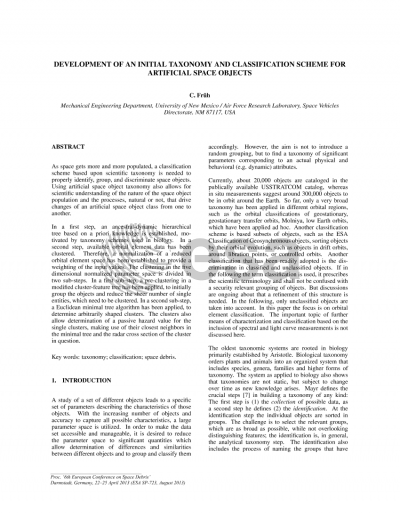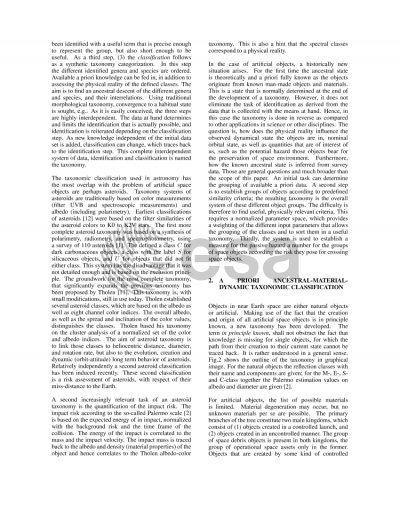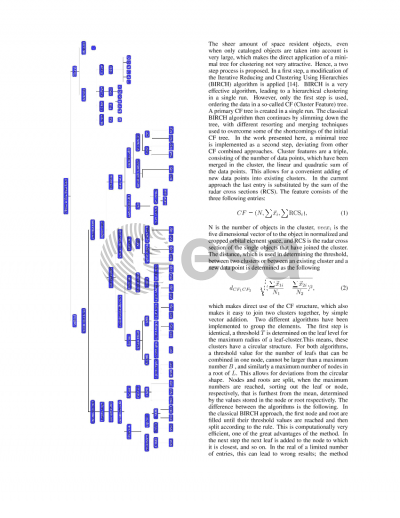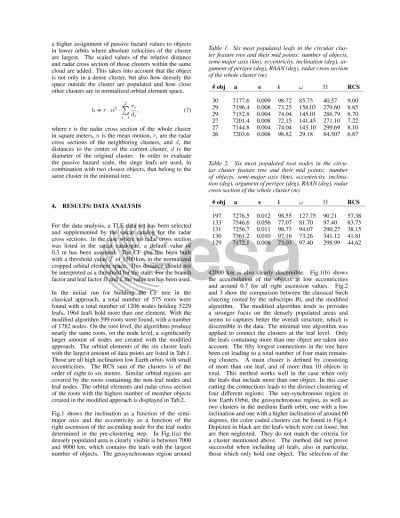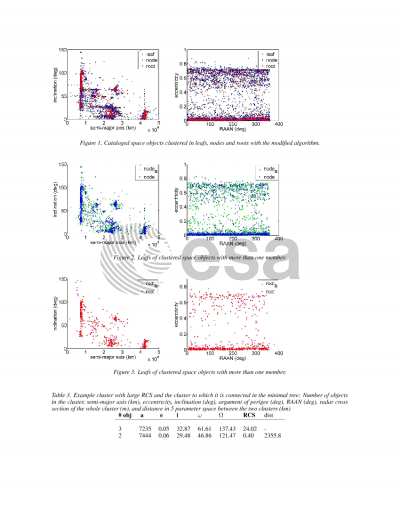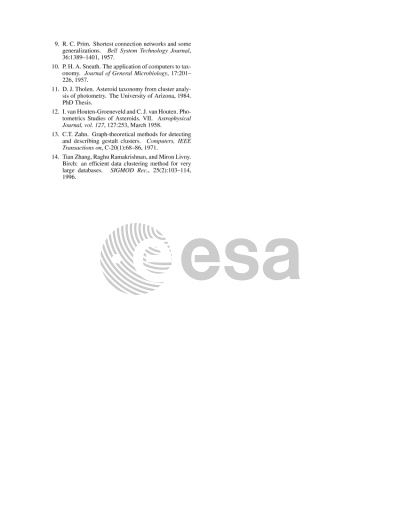Document details

Abstract
As space gets more and more populated, a classification scheme based upon scientific taxonomy is needed to properly identify, group, and discriminate space objects. Using artificial space object taxonomy also allows for scientific understanding of the nature of the space object population and the processes, natural or not, that drive changes of an artificial space object class from one to another. In a first step, an ancestral-dynamic hierarchical tree based on a priori knowledge is established, motivated by taxonomy schemes used in biology. In a second step, available orbital element data has been clustered. Therefore, a normalization of a reduced orbital element space has been established to provide a weighting of the input values. The clustering in the five dimensional normalized parameter space is divided in two sub-steps. In a first sub-step, a pre-clustering in a modified cluster-feature tree has been applied, to initially group the objects and reduce the sheer number of single entities, which need to be clustered. In a second sub-step, a Euclidean minimal tree algorithm has been applied, to determine arbitrarily shaped clusters. The clusters also allow determination of a passive hazard value for the single clusters, making use of their closest neighbors in the minimal tree and the radar cross section of the cluster in question.
Preview
